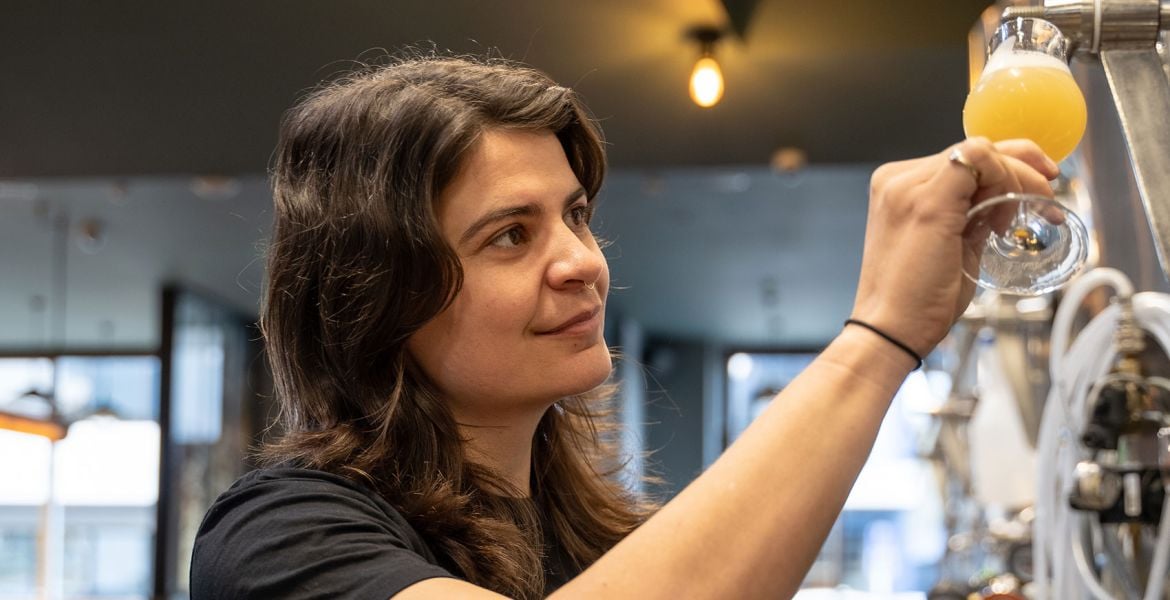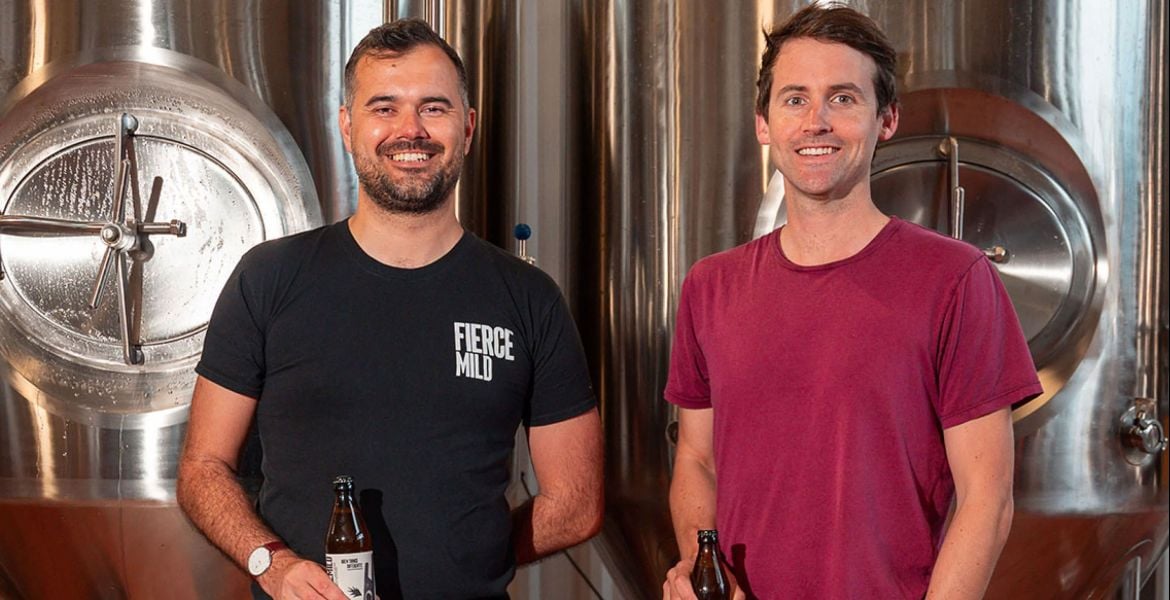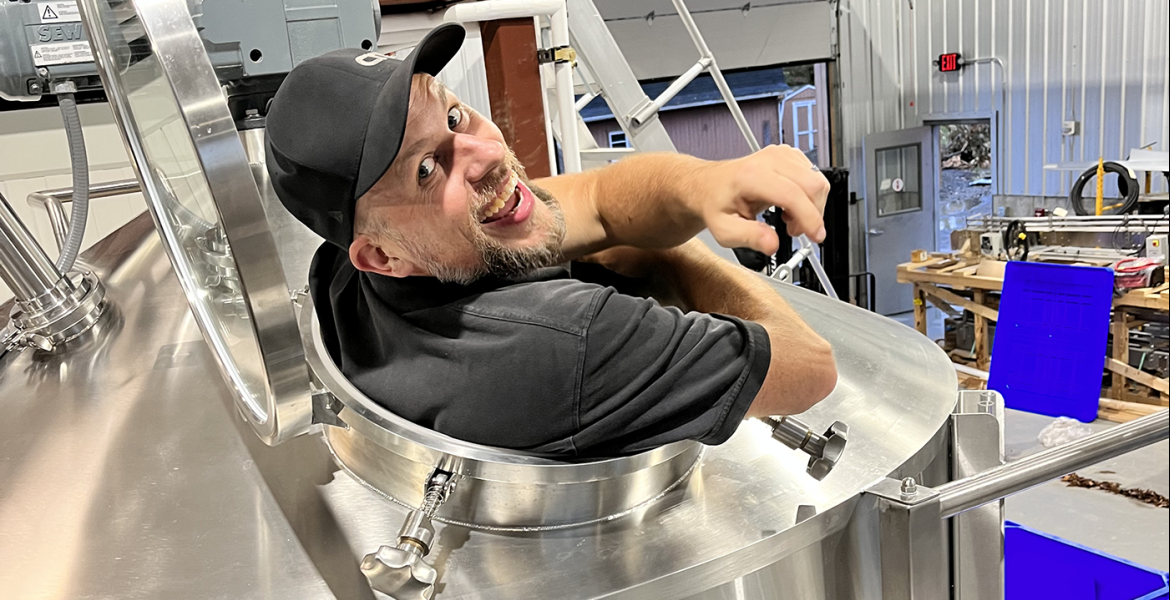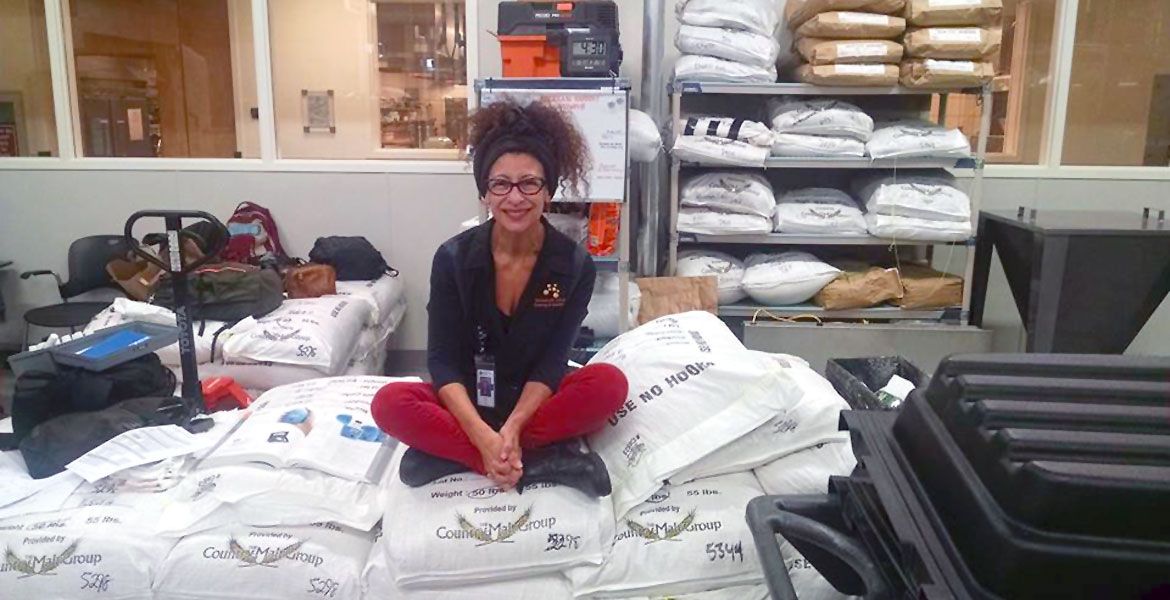When it comes to well-travelled Aussie brewers, Brent Soutar has got to be up there. From the day he decided to pursue a career in brewing about ten years ago, he moved from Australia to Chicago to London to Melbourne to Berlin to California.
Didn’t quite keep up? I’ll slow it down for you.
He started in the industry working with Bintani in Australia, when they were just a small operation – “I was pretty much the first non-family member who was hired on board,” he explains. From there, he moved to Chicago to study brewing at the Siebel Institute.
Degree in hand, he moved to London and got a job brewing at Camden Town Brewery. While there he worked with Alex Troncoso, former Little Creatures head brewer (whom we’ve talked to here and here about his contribution to the UK brewing scene), and through that contact Brent ended up getting a job with Little Creatures in Geelong when he moved back to Australia.
But, though he'd come back to familiar shores, Brent had already caught the bug. Coming home was an interim step – he already intented to move overseas again.
After a few years with Little Creatures, Brent moved to Berlin and became the head brewer at a little 5hL brewpub called Heidenpeters. While it was a step down in size and technology, the brewhouse there played a key role in developing his brewing experience.
“It was basically all hand valves and small pumps and very hands on,” says Brent. “Little Creatures has maintenance staff who can come out and help if there’s an issue, but in this smaller operation, it’s pretty much just yourself. You get to know the equipment a little bit more intimately than you do in a larger brewery.
"So that was good for my brewing knowledge and understanding – helped me to troubleshoot things instead of just calling someone else up to have a look at it.”

While he was working in Berlin, Brent got talking with Matt Brynildson, brewmaster at Firestone Walker and six time Brewer of the Year at the Great American Beer Festival. He’d met Matt before through a mutual friend and, while he was visiting Berlin, he and Brent started a conversation about possibly working together. That conversation took seven months, a job offer, a visa sponsorship, and a stack of paperwork, but had a great end result: Brent flying to California to work at Firestone Walker on a rather different scale to his cosy brewpub in Berlin.
“It was awe-inspiring. They’d just put in a brand new 300bbl [476hL] brewhouse before I started working there," he says. "They’ve been around for 23 years now, and they’re still expanding every year… to be around for that long and still be growing, it pays tribute to the quality of the beer they’re making.
“Matt has been there for 18 years, our head brewer’s been there for 15 years, our production brewer for 16 years… they’re senior veterans in the industry. Learning from those guys is worth its weight in gold. I try to feed off of them as much as I can; that was the main reason I wanted to come out here.”
Since not all of us will get the opportunity to work at Firestone Walker, we took the opportunity of inviting Brent to be a little voyeuristic and allow us peek behind the curtains of Firestone Walker.
MATT’S PROCESS
While Brent doesn’t work with Matt on a day-to-day basis, he’s found it inspiring to watch his process.
“Matt is the guy who makes all the recipes – he’s involved in every single beer that comes out. He’s a bit more stepped away from a lot of the floor stuff that happens, but he just won’t let go of recipe development. For all the beers, he has everything to say. Then there’s the process of doing multiple trials and batches before anything comes into market, honing a particular recipe… he’s very meticulous for how a beer’s supposed to be before it gets released.
“He’s very much a hop guy to begin with. Most of our beers are dry-hopped with five, six, seven kinds of hops in one dry hop. Watching him figuring out what hops work well, his process of laying out all the different hops, and breaking it up, and doing smell tests of the different hops… it’s interesting to see how his process works, and his understanding of what flavours work together.”
THE ONE-PERCENTERS
Brent talks about the concept of “one-percenters” – those little things that the Firestone team take notice of, and which make a real difference in setting them apart.
“I’ve loved learning the small things they do differently – that little one percent of things they do at the brewery that makes you aware of a lot more things. Small techniques, like how regimented they are with the dry-hopping process.
“Or how, all through the process, everyone is on the same page, everyone does the same thing. We’ve got 22 brewers, we work 24/7, but everyone knows what needs to be done at the right time.
“I don’t really want to give away too many things on the brewing side of things – they do like to keep it a little bit tight. But they hit their numbers all the time. It’s beautifully consistent. And that’s why it’s a top quality outcome, and the end product is always consistent. Everything is just done to a T.”
HOP CANNONS AWAY!
While he was careful not to give away any of Firestone’s trade secrets (damn!), Brent was patient in letting us geek out about Firestone’s big ol’ hop cannon.
For Brent, it’s just an everyday piece of equipment. For brewers, it’s interesting to hear about brewing gear on a scale we don’t really see in Australia. For non-brewers, it’s like hearing how a spaceship works.
“It’s nothing fancy really – just a small tank that can hold about 150kg of hops at any one time, all dry weight. It’s mobile so we can move it around. The hop pellets go in, then it’s purged with CO2 very gently. There’s a soft hose that comes out of the cannon, and it connects to a port in the top of the fermenter. Then we attach CO2 to the cannon, build up the pressure, and we shoot the hop pellets straight through the soft hose and into the top of the tank. It’s a closed system, so no oxygen can get in – we’re very big on minimising oxygen content.
“For Mind Haze, we have to load that hop cannon five or six times to fill the tank; it’s quite a lot of hops that we use. It can take someone a whole shift to hop one beer!”

“Quite a lot of hops” is an understatement. But note that this hop cannon is only what they use for the “smaller” fermenters. For the bigger tanks…
"We’ve just put in a new 1500bbl fermenter, and that’s got a built-in hop cannon.”
For those playing at home, a 1500bbl fermenter holds close to a quarter of a million litres, and its built-in hop cannon is designed to hold around 1400kg of hop pellets. This is the scale Firestone Walker is working on. No wonder Brent considers the mobile hop cannon (which is about as tall as he is) to be the “small” one.
Just to prove we didn't only talk to Brent so we could froth over big shiny equipment, here's more on his career, experience overseas, and time at Firestone Walker...
BRENT SOUTAR

HOW DID YOU GET INTO BREWING?
I first started out at Bintani in the warehouse with all the brewing raw materials that the local Australian breweries would use. They also had a small 50L pilot kit, which I started to use, and my interest started to grow; I wanted to move from the supplier side to brewing. So I enrolled in the brewing school, Siebel, in Chicago. Once I graduated I moved to London and my first brewing job was with Camden Town Brewery.
FROM LITTLE CREATURES, TO A TINY BREWPUB IN BERLIN, TO THE MONSTER THAT IS FIRESTONE WALKER – WHAT WAS THAT TRANSITION LIKE?
It was certainly interesting! While making wort is essentially the same, going from a brand new top of the line Krones kit at Creatures, where most of the process is fairly automated, to a very old and manual 5hL kit in Berlin where you had to be on top of every little thing timewise, and then to Firestone, where the 300bbl brewhouse is running 24/7. Has given me a lot of insight into the different ways people can produce quality products.

ARE YOU STILL IMPRESSED BY THE SAME THINGS YOU WERE WHEN YOU STARTED THERE?
I am always learning, so I’m constantly impressed with the beer industry. Still in awe whenever we dry-hop a new hoppy beer into our large fermenters.
WHAT ARE SOME OF THE TECHNOLOGIES OR PROCESSES THAT HELP FIRESTONE WALKER REACH THE HEIGHTS IT DOES?
The most well known would be the Firestone Union system method during fermentation, where a portion of active fermentation is transferred into oak to finish off primary ferment before being moved back to stainless. Firestone actually has this technology patented.
HOW HAVE YOU DEVELOPED AS A BREWER WORKING THERE?
It’s good to see how different breweries approach certain tasks, like timing and process of dry hopping for instance. It’s been a lot of those small and consistent "one-percenters" to things that I’ve taken a lot of notice of here.
MATT BRYNILDSON IS A BIT OF A LEGEND IN THE BREWING WORLD. WHAT INSIGHTS HAVE YOU GAINED OR APPROACHES HAVE YOU LEARNED FROM HIM?
Matt is certainly one of the most respected guys in the industry. Just a hell of a nice guy too.
I really enjoy his approach to new beers – the way he takes his time to make sure it’s true to style as possible, and his understanding of how different hop varieties work well together. Also he is an excellent example of how people in this industry should be; he always has time to chat and is so excited about brewing.
He’s the top guy, the brew master, so there’s a couple of people between him and me. But he’s always got his door open. We always talk – he’s a great guy to ask questions, or just talk beer.
HAVE YOU BEEN KEEPING TRACK OF THE EVOLVING AUSSIE SCENE FROM AFAR?
Nowadays with social media, it’s fairly easy to keep a slight finger on the pulse back home. But I just recently returned home to Melbourne for the first time in close to four years, and I was certainly impressed with the quality of beer that is out there.
HOW HAVE YOU FOUND THE BEER SCENES IN GERMANY AND THE US?
Germany certainly has rich history in brewing, but as far as the craft beer scene goes, it’s got some catching up to do – it’s very young, very early. But, in saying that, my time in Berlin opened my eyes to the fact people really want it there. The breweries are young and very small, but there is a Berlin craft beer week and plenty of bars that are around to support it, which is key.

The US is truly beer crazy, but I love it. It’s great to be a part of it out here. It’s been the top of my list to work here from day one.
There’s a trend in America moving toward very local, moving to smaller brewhouses over larger commercial sizes. Some breweries only sell out of their location – and they sell out. And a lot of those ones are doing really well, those smaller in-house ones. It’s definitely a good way to go about it.
HOW DO THEY COMPARE TO AUSTRALIA TODAY?
Australia is pretty advanced in the beer world; we have always been a beer drinking nation. With the advances in social media, new beer trends don’t take long to catch on. The only limiting factor is the population size of Australia compared to the US.
IS THERE MUCH AWARENESS OF AUSSIE BEER IN THE US?
Australian and New Zealand hops are really popular in the US, and those that are lucky enough to get their hands on them are making some truly wonderful beers.
IF ANY AUSSIES HEAD TO CALIFORNIA WHAT ARE THE BEERS, BREWERIES AND BEER EXPERIENCES THEY ABSOLUTELY MUST NOT MISS?
San Diego has always been looked at as the destination city in California. But LA has some of the best new breweries. If in LA, I would certainly recommend checking out Green Cheek, Highland Park, and Monkish.
Travelling north, stopping in Santa Barbara to check out Topa Topa and Figueroa Mountain and Barrel Works. San Luis Obispo, you have to make the stop at There Does Not Exist and Central Coast Brewing – and, of course, Firestone’s brewery in Paso Robles.
On your Hwy 1 adventure, it’s certainly a must to stop at Alvarado Street Brewing before getting into SF where Rare Barrel and Fieldworks are a great spot for a beer.
You can check out other Aussie Export features here. Know an Australian working in the beer industry elsewhere? Let us know.




















